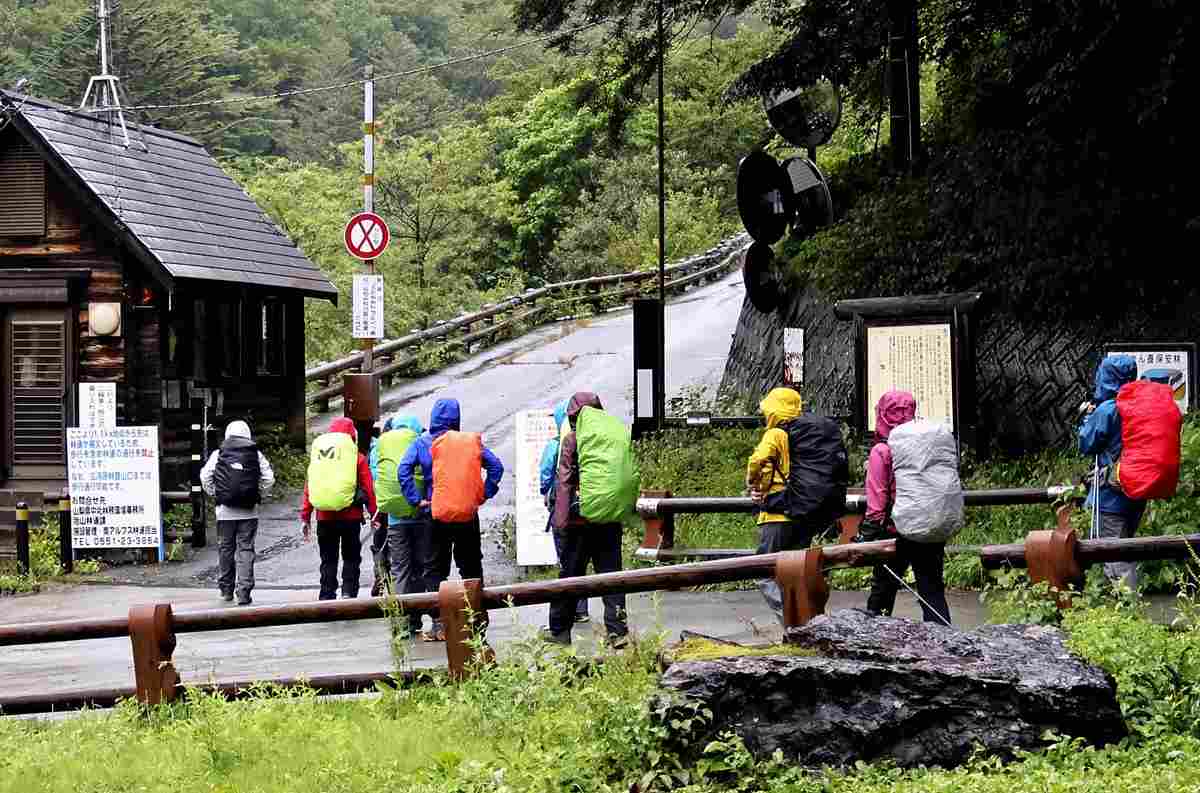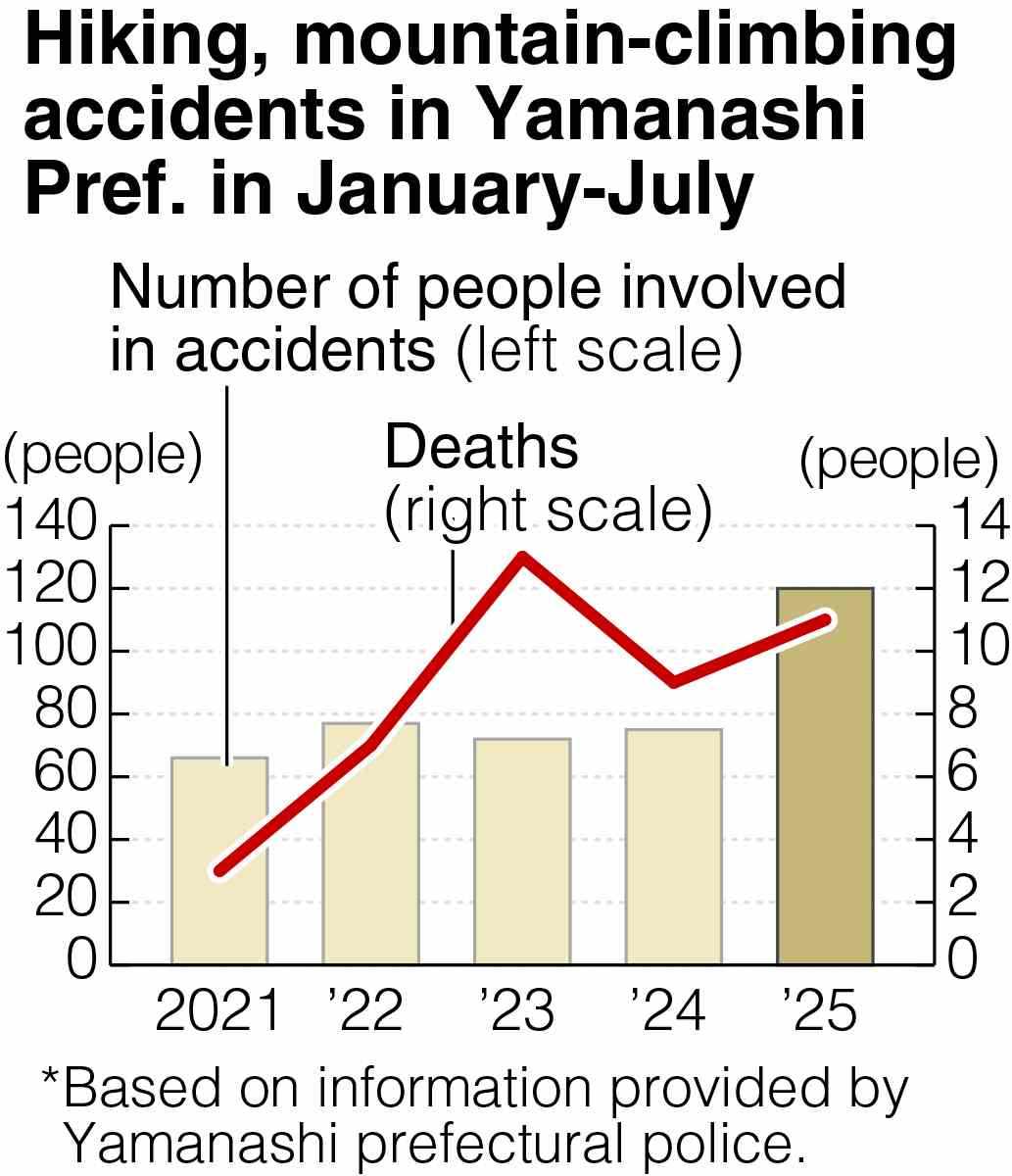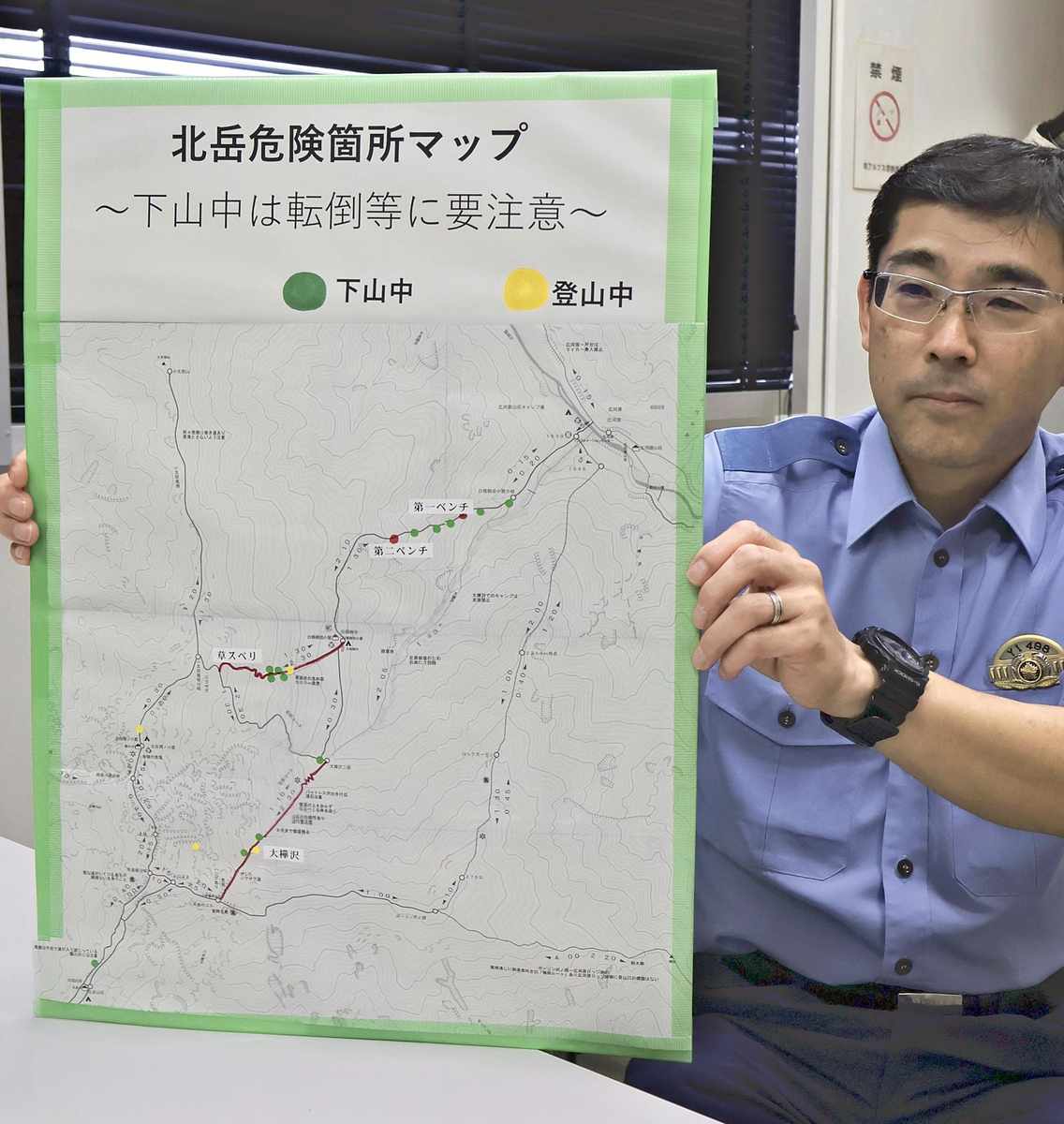
The Yomiuri Shimbun
Hikers head toward a mountain trail in Minami-Alps, Yamanashi Prefecture, on Aug. 7.
14:20 JST, August 18, 2025
KOFU — Home to some of the most popular climbing mountains in Japan, including the iconic Mt. Fuji, Yamanashi Prefecture is a magnet for hikers. However, hiking and climbing accidents have spiked this year in the prefecture’s peaks, among them the Southern Alps, the Daibosatsu and Doshi mountain ranges.
As of the end of July, 120 people had gotten lost or had accidents on Yamanashi’s mountains, an increase of about 60% from the same period in 2024. Eleven people died in these incidents.
More than 80% of the people who got into trouble came from outside Yamanashi, so local police and other authorities have been going the extra mile to raise awareness about the importance of being fully prepared before hitting the trails.
On the morning of Aug. 7, a bus arrived at the starting point for the climb up Mt. Kitadake, which at 3,193 meters is Japan’s second-highest peak. Despite the rainy weather, the bus was almost full with at least 50 hikers on board. Soon after arriving, the passengers slung large backpacks over their shoulders and made their way toward the mountain path.
“I almost tripped over once as I came down a mountain,” a 57-year-old company employee from Narashino, Chiba Prefecture, said as she steeled herself for the upcoming climb. “I’ll use trekking poles and make sure I walk carefully.”
According to sources, including a website for mountain lodge reservations on Mt. Kitadake and its surrounding area, the number of people who stayed at these facilities in July increased by about 600 from the same month in 2024. The lodges were said to be mostly full on weekends.
Problems frequent on descents
The wide variety of mountains in Yamanashi is one reason the prefecture attracts so many hikers. The entire prefecture is dotted with well-known peaks such as Mt. Kitadake and Mt. Yatsugatake in the west, and Mt. Daibosatsu in the east. There are trails that cater to every level of hiker, from first-timers to advanced mountain climbers.
Outdoor activities gained attention during the COVID-19 pandemic, and the population of mountain climbers has been trending upward in recent years amid the boom in trekking on “low mountains.” However, hiking and mountain-climbing accidents have been occurring almost in proportion to the increase in people hitting the trails.

The Yomiuri Shimbun
According to the prefectural police, the number of people who got into trouble in the mountains between January and July had hovered at about 60 to 70 each year from 2021. But this year, that figure jumped to 120. Eleven people died and 36 people were seriously injured during that period.
The age bracket that had the most accidents, with 27, was people in their 50s. This was followed by 25 people in their 60s, and 17 each in their 70s and their 20s. These figures indicate that middle-aged and elderly hikers were involved in the bulk of the accidents.
“Many accidents involve people who haven’t noticed that their physical strength has declined,” a senior Yamanashi prefectural police official told The Yomiuri Shimbun.
A striking number of accidents occur as hikers descend a mountain, when concentration wanes due to fatigue from the climb. On Aug. 8, a 55-year-old man from Tokyo lost consciousness and died while descending the Yamanashi Prefecture side of Mt. Fuji.
Efforts focus on maps, train journeys

The Yomiuri Shimbun
An officer from the Yamanashi prefectural police’s mountain safety measures unit, right, discusses mountain safety with a hiker traveling to the prefecture on the JR Chuo Line on Aug. 6.
More than 80% of people who ran into difficulty in Yamanashi’s mountains were residents of other prefectures. Previous attempts to make visiting hikers aware in advance of the potential dangers lurking on the trails have had little impact, so local authorities have thought outside the box to devise new approaches.
As part of those efforts this climbing season, the prefectural police have started deploying officers on trains used by many visitors to the prefecture. These officers give advice and guidance to hikers traveling to Yamanashi. Previously, the police distributed flyers at trail starting points and other locations, but many climbers were in a hurry and just getting them to stop was difficult. Consequently, the police turned their attention to the time when these hikers were making their way to the prefecture.
This approach was tried for the first time on Aug. 6, when officers from the prefectural police’s the mountain safety measures unit boarded the JR Chuo Line, which carries many hiking enthusiasts from Tokyo. The officers gave nutritional supplements and other items to hikers, checked their equipment and physical condition, and explained in detail dangerous spots on the mountains the hikers planned to climb. Onboard announcements also reminded hikers to exercise caution on the trails.

The Yomiuri Shimbun
An officer holds a map compiled by the Minami Alps Police Station showing areas where hikers get into difficulty on Mt. Kitadake.
In July, 15 accidents were reported on Mt. Kitadake, more than double the figure recorded in the same month last year. This surge prompted Minami Alps Police Station, which is responsible for hiker safety on the mountain, to compile a handmade map with stickers marking areas where hikers got into difficulty on the trail. Intended to alert hikers to tricky spots at a glance, these maps are being displayed at mountain lodges and huts, and the police are calling on hikers to make use of them.
The prefectural police also are urging mountain climbers to draw up hiking plans based on a mountain trail grading scale displayed on the prefectural government’s website and elsewhere. The scale indicates the difficulty of trails and other information.
“We want people to carefully consider their own physical strength and experience, and then select mountains suited to their level,” said Shigeru Ono, deputy chief of the mountain safety measures unit.
Fire dept, helicopter rescue service ink deal
In a bid to swiftly locate and rescue people who get into trouble while hiking in the mountains, the Otsuki Fire Department in Otsuki, Yamanashi Prefecture, in May inked a cooperation agreement with Authentic Japan Co., a private company that operates the Cocoheli helicopter rescue service.
Cocoheli is a membership-based service under which members receive a small transmitter that enables searchers to pinpoint their location even in mountainous areas where mobile phones do not get reception. About 170,000 people across Japan are members.
Under the agreement, Fukuoka-based Authentic Japan will promptly provide the fire department with the location data of a member who needs assistance. The department and Authentic Japan will reportedly also conduct joint rescue exercises.


AloJapan.com